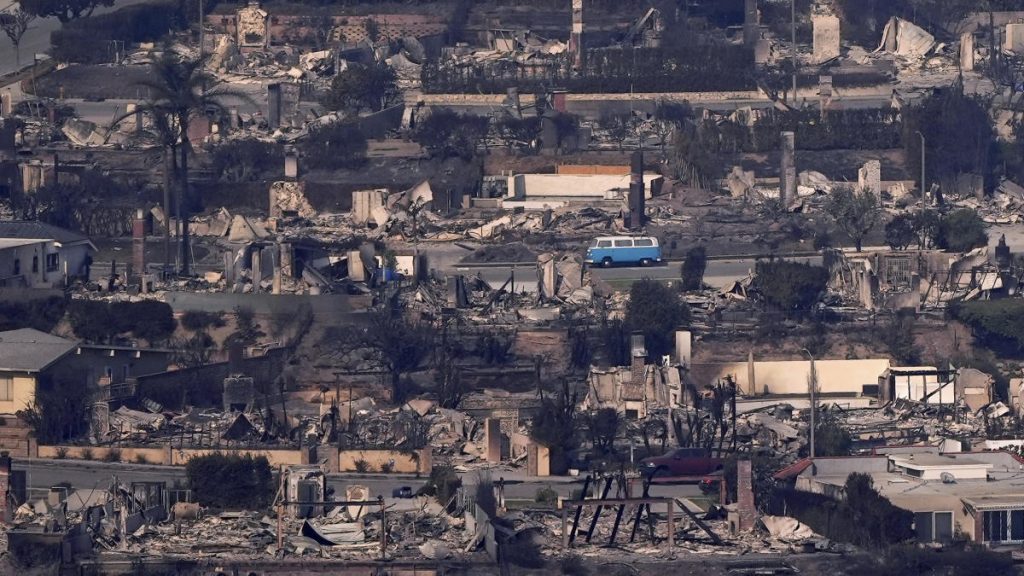
SACRAMENTO, Calif. (AP) — The wildfires that destroyed homes in multiple sections of the Los Angeles area will test California’s efforts to stabilize the state’s insurance marketplace after many insurers stopped issuing residential policies due to the high fire risk.
The wind-driven blazes that started Tuesday roared through neighborhoods from the Pacific Coast inland to Pasadena and the Hollywood Hills. The vast property damage in a disaster-prone state with high real estate prices and an uncertain insurance landscape could make coverage more expensive and even harder to find.
One area likely to feel the impact — and encounter challenges rebuilding — is Pacific Palisades, an affluent community sandwiched between the Pacific Ocean and the Santa Monica Mountains. This week’s wildfire there has been named as the most destructive in the modern history of the city of Los Angeles. Flames destroyed businesses, a library, cultural landmarks as well as houses.
State authorities previously listed the Palisades as one of the five Southern California areas with the highest concentration of potential wildfire risks. The community also is among the areas most impacted by an unavailability of insurance coverage.
When State Farm decided to discontinue coverage for 72,000 houses and apartments in California last year, it dropped nearly 70% of its market share in Pacific Palisades, according to the San Francisco Chronicle.
Here’s what to know about California’s residential insurance crisis and how the ongoing wildfires may further disrupt the policy market:
Why does California have a home insurance crisis?
California has seen other major insurers pull back on property coverage in the nation’s most populous state as climate change makes wildfires, floods and windstorms more common and damaging.
Of the top 20 most destructive wildfires in state history, at least 15 occurred since 2015. The data did not include the Los Angeles area fires this week.
In 2023, seven of the 12 largest insurance companies by market share in California either paused or restricted issuing new policies in the state.
That has made it extremely difficult for homeowners in high-risk areas to obtain or afford insurance.
What happens to residents who can’t get regular home insurance?
California homeowners in wildfire-prone areas either go without insurance or join the Fair Access to Insurance Requirements (FAIR) Plan, which the state created as a last resort for homeowners who couldn’t find insurance.
Many people purchase the FAIR Plan to satisfy their mortgage requirements, but the policies only cover basic property damage and carry a $3 million limit. Given the value of the real estate involved and the limited coverage, FAIR Plan policyholders who lost homes in this week’s fires may struggle to be made whole.

